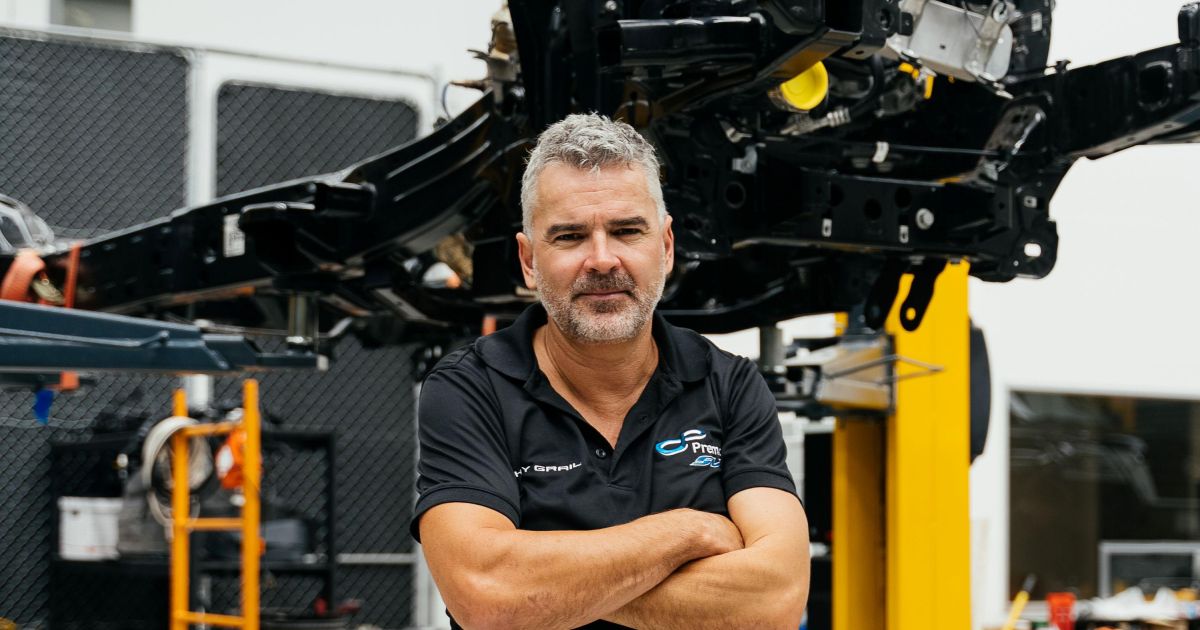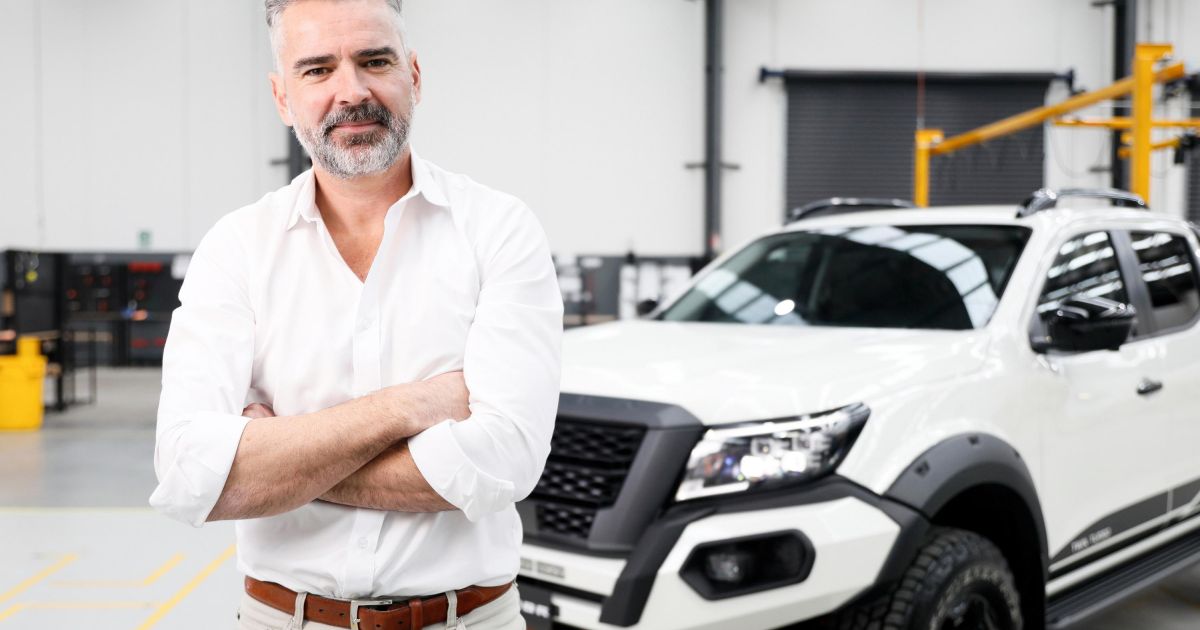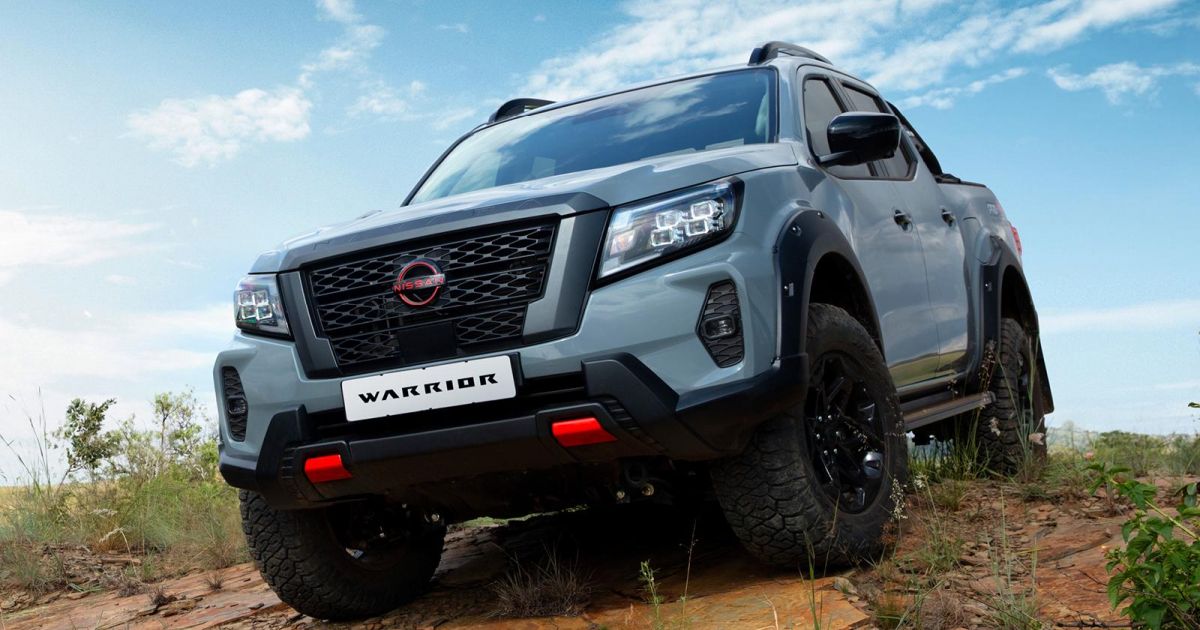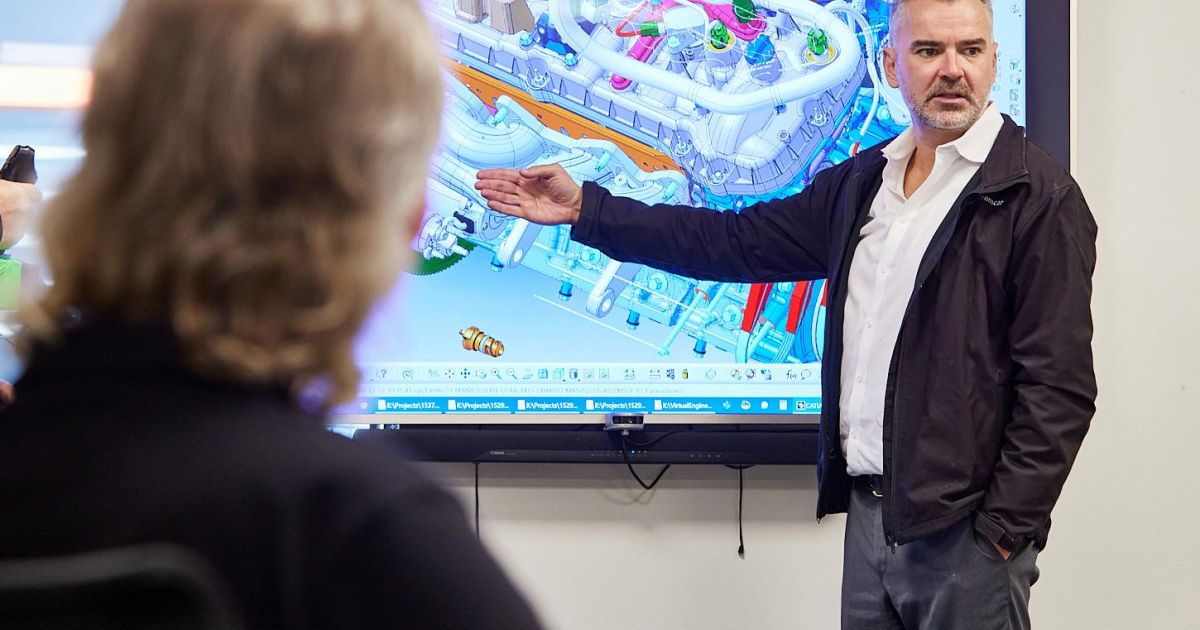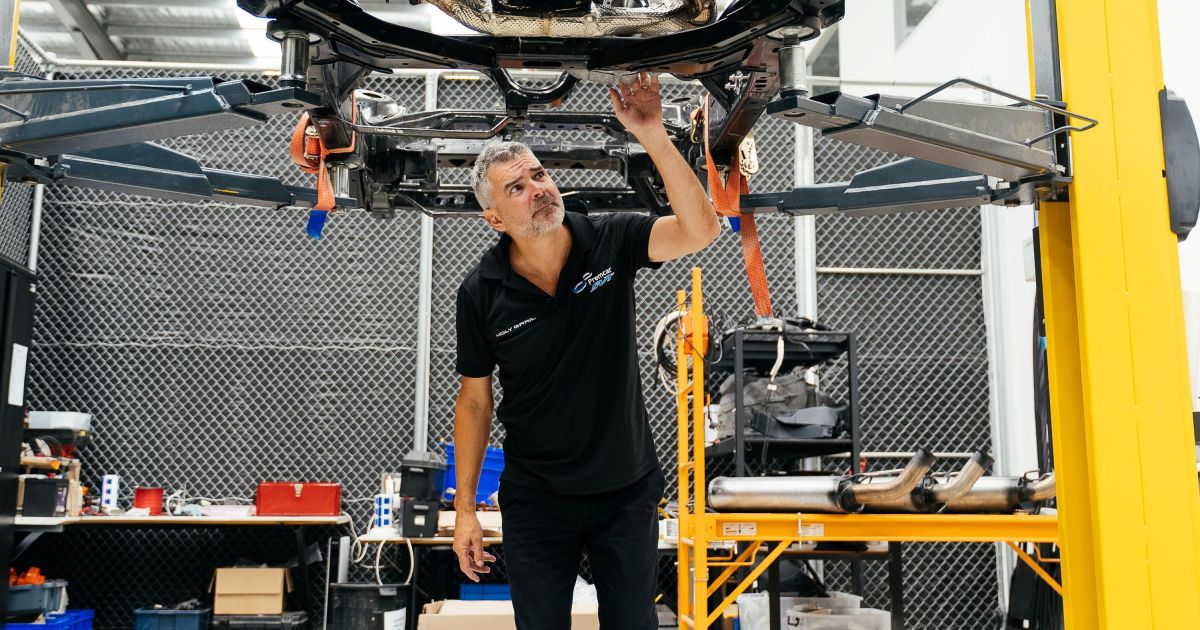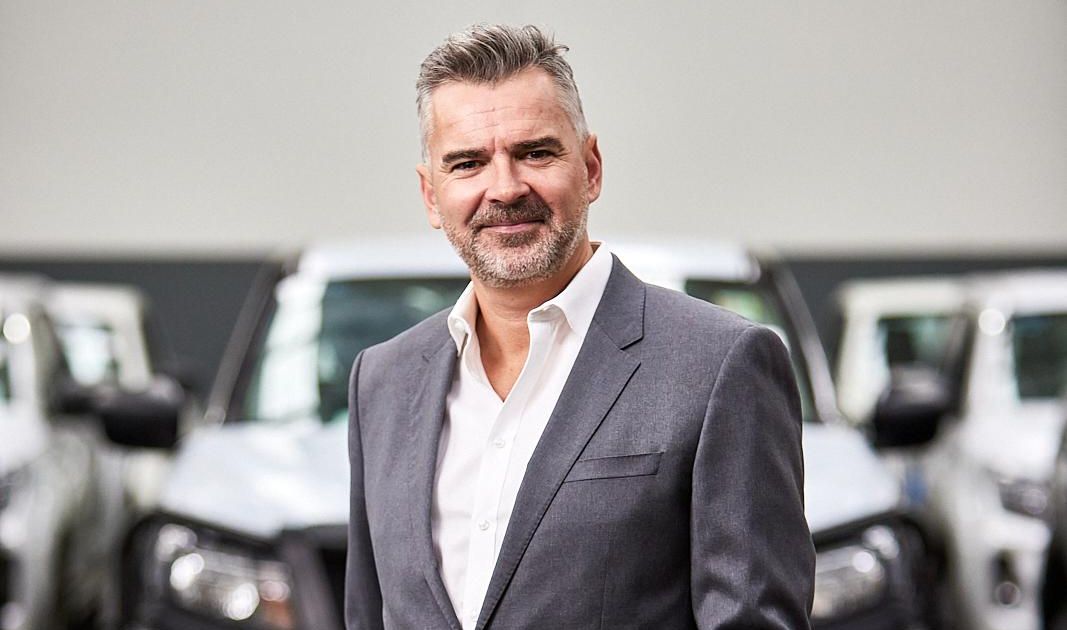He may not be your typical automotive industry executive, but Bernie Quinn has assembled some formidable feathers in his cap during a near 30-year engineering career that has produced some of this country’s most iconic vehicles.
These days he’s the CEO of Premcar, which most people recognise as the engineering company that helped transform the Nissan Navara ute and Patrol SUV into hardcore Warrior-branded off-roaders, more than 10,000 of which have now been produced.
First established in 2019, Nissan’s Warrior sub-brand has been so successful it’s being replicated in other markets starting with South Africa, where Premcar has formed a joint venture to produce Navara Warriors in Nissan’s Rosslyn factory.
A Melbourne engineering firm born out of the death of Ford Performance Vehicles (FPV), Premcar can trace its roots back to the 1996 launch of the Tickford Vehicle Engineering-enhanced Ford EL Falcon GT, followed by the 1998 TS50, TE50 and TL50, and the 2001 Mustang converted locally to right-hand drive by Tickford.
Hundreds of new car deals are available through CarExpert right now. Get the experts on your side and score a great deal. Browse now.
FPV was then formed in a joint venture between Ford and Prodrive, which bought out Tickford, and the first fruit was the 2003 BA Falcon-based FPV GT. But Prodrive also helped develop Mazda Australia’s MX-5 SP and Toyota Australia’s TRD-badged HiLux and Aurion.
After it developed the supercharged 5.0-litre ‘Miami’ V8 for FPV’s Falcon-based range, Prodrive became Premcar in 2012 and it immediately produced the 335kW FG Falcon-based FPV GT, followed by the 351kW FPV GT-F in 2014, and then the 325kW FG-X Falcon XR6 Sprint and XR8 Sprint sports sedans based on the final and finest Falcons in 2016.
A year earlier, Premcar also began its extensive defence industry work, and even co-developed its first helicopter for a major corporation, before teaming up with Nissan to become one of Australia’s two largest automotive engineering companies alongside Walkinshaw Automotive.
We sat down with Bernie to ask him about what’s next for Premcar, the Warrior brand, and the Australian auto industry as it undergoes rapid change amid an influx of new brands and products.
Why is local new-vehicle enhancement so popular in Australia?
There are a couple of reasons why.
First of all, many new-car buyers in Australia are very particular. I’ve said this a few times over the years. A lot of Australian car buyers grew up when we had local car manufacturing.
You had Falcons and Commodores, for example, and you could effectively customise them to the spec you wanted when new. You could have almost any colour.
There were utes, sedans and wagons; sports, executive and luxury; long-wheelbase and short-wheelbase; various engines such as V8, V6, I6, turbo, supercharged; pretty much every permutation and combination you could have. Australians became very used to customising their cars to their own specifications.
But when Ford and Holden and others, including Toyota, Nissan and Mitsubishi, left the local new-car manufacturing scene in Australia, the options became far more limited because we got generic global vehicles. But local customer tastes didn’t go away.
That money they were spending personalising their new cars started to be spent on accessories and in the aftermarket, and so companies like ARB and others thrived in that car-customising environment. So that’s the first thing.
Secondly, the Australian new-car market is relatively small at around 1.1 to 1.2 million [annually], but the number of brands on sale here is around 70. So in order to create a unique point of difference, carmakers have the ability to customise their vehicles using a local enhancement program.
Offering new-car models that are better suited to Australia’s driving conditions can give them a strong competitive advantage. They’re the two big reasons.
Why is locally tuned suspension such a valuable enhancement for consumers and auto brands, and not just in Australia?
Well, some conditions we’re exposed to in Australia can be quite different but they’re not always vastly different to anywhere else in the world. But it’s the variety of conditions which a driver might encounter in a single day that can be so vast. And we sometimes expect our vehicles to do too much.
You can see this in the fact that the two best-selling cars in Australia are quite often the Ford Ranger and Toyota HiLux. Dual-cab utes are very popular here, partly because the bandwidth these vehicles have to cope with in terms of usage profile is huge.
So you have to try and create a suspension tune that works well on a massive variety of surfaces with a very wide range of driving conditions, and this needs very special consideration. And this, to me, is a unique customer usage profile that you won’t find in many other markets.
How important is local advanced driver assistance system (ADAS) tuning?
The proof’s in the pudding. When you drive a car with poor ADAS tuning, or a car that hasn’t been tuned to specific Australian conditions, and it’s a very frustrating experience.
There’s a temptation for a lot of carmakers to conclude, “oh, Australia’s just a relatively small market. Let’s just use this ADAS tune from the US or Japan or China or wherever”.
It’s a mistake. It simply doesn’t work because Australia’s driving environment is unique. Cars parked on the side of the road, bike lanes, different architecture for traffic lights, speed-limit signs, warning signs, and other street furniture.
ADAS systems that have been developed and tuned somewhere else too often don’t work correctly here. So it’s extremely important to have locally tuned – and correctly tuned – ADAS systems, especially if you don’t want to end up with a dissatisfied customer or a customer that just turns the system off.
And keep in mind that locally tuning a car’s ADAS systems isn’t just a matter of plugging in a laptop and fiddling with some digital settings.
There’s quite a bit involved to achieve correct tuning, especially considering almost all of these systems are proprietary to the carmaker, even if the related hardware and some of the software is supplied by major technology brands.
Why has Premcar continued to succeed after local car manufacturing ended in 2017?
Lots of hard work. I’ve said a few times that when my partner Jim Jovanovski and I took over the business in 2012 it was a bit like jumping off a building while building the parachute on the way down.
We had a strategic plan but, more importantly, we had great capabilities, lots of flexibility and a huge amount of resilience in our group. That’s really the key to our success.
We searched for a unique position in the market and we eventually found it, and that’s the reason why we’ve thrived. It didn’t come to us easily. It was a lot of hard work and we always put the customer first, which has been critical.
I’m talking in terms of working out exactly what the customer needs and wants, and then working really hard to meet them and ensuring it helps to build their business.
Why is Australian car-making important – and possible – in 2025, despite the local manufacturing naysayers?
It’s because we’ve got a market here in Australia that is desperate for products that are very well suited to buyers’ needs, and these customers are often willing to spend a little more compared to buyers in other countries.
Companies like Premcar and Walkinshaw prove that if you offer products that are developed in Australia for Australians, local customers will buy them, even if these products have a premium price. It’s important to cater to these customers.
We’re doing it through secondary manufacturing at the moment, but this could be expanded to build cars in Australia for Australians.
You have to remember that the decisions made about closing the local new-car manufacturing industry in Australia were made at a time when our currency was, let’s say, artificially and temporarily high.
Those decisions had their gestation in 2009. That was the time when key decisions about the possible next Commodore, next Falcon and next Territory were being cemented.
The Australian currency didn’t support the industry at the time because it was about A$1.05 to A$1.10 to the US dollar due to the global financial crisis, which happened mostly in other countries, and not to the same extent in Australia.
And that was really the beginning of the end. Now, when these big car companies closed their doors on local manufacturing, the currency was back around 70 cents US, and at the moment it’s around 65 US cents.
We would be very competitive if we had maintained all the capital equipment and knowledge and systems and processes. We had been able to capture that and leverage it in 2009 through to 2015.
We’d have a thriving industry now, so it was really an aberration which led to its closing. That’s the really frustrating and disappointing thing about it.
Now, to get back into local car manufacturing, we’d have to invest a lot of money. We’d have to build all that capital equipment again and all that infrastructure again.
It wouldn’t be easy. But is it possible? A hundred per cent, yes. Would it be successful? 110 per cent. With the right attitude and the right amount of commitment it could be very, very successful.
And keep in mind that many of the countries that dominate new-car manufacturing and assembly today didn’t know how to make cars or their components 40 years ago. But with the right attitude, commitment and investment they’ve achieved remarkable results.
Premcar recently launched in South Africa. Is it looking to further expand its offerings into other overseas markets?
Yes. One of the successes to come from our secondary manufacturing programs in Australia has been how various OEMs [automakers] around the world have responded.
And as everyone knows – because it’s in the news every day – the established OEM carmakers are very, very keen to look for extra revenue from their existing model lines.
We’re trying to assist them to achieve this with secondary manufacturing programs, not just in Australia but in other markets as well.
And then there are the new brands entering the market; they’re keen to create a unique product offering as well.
What we do with our new-vehicle enhancement programs and secondary manufacturing programs appeals to both the traditional legacy OEMs and the new OEM brands. So I think we’re in a really good position to grow and expand in Australia, as well as globally.
What’s your opinion of Australia’s current new-vehicle market and all of the new auto brands that are entering it?
It’s very competitive and it’s very, very tough to be successful.
I think the new brands to emerge from China are being very aggressive. It’s widely reported China has an oversupply of new-car stock in their domestic market so Australia is clearly a very attractive market for revenue.
Many of the long-standing OEMs are trying to adjust and transform their companies in what is now an extremely competitive new-car market that’s been changed mainly by new Chinese brands coming in at lower prices.
It’s important for them to create product-based differences or advantages and helping them achieve these is where we focus our business development energies.
How does a new brand differentiate itself in such a crowded auto market like Australia’s?
I touched on this in my last answer. I think the best way to achieve a point of difference is to create a product-based advantage, which means that you create a new car that your target customers can really enjoy because it accurately meets the needs of their lifestyle, and they can drive away in that car from the showroom.
And it’s not just offering the right new cars that’s critical. Another big point of difference is offering the right aftersales backup.
You can see a number of long-standing OEMs are actively marketing that they have authorised dealerships across the country, which implies lots of easy-to-access parts and service support, and very long new-car warranties. All of this is clearly about trust, and that can take time.
Does the influx of new Chinese car brands give you more opportunities?
Yes, it does, because we can help them behind the scenes with the technical refinements that consumers rarely ever see but can experience when they drive their new car.
Making new cars more suitable for local consumers is a great way to reach more new-car buyers. But it’s not just the new brands that are offering great opportunities for Premcar.
Many of the long-standing car brands are taking the same approach because this new level of market competition is driving brands to look for specific product-based advantages.
Do you have the capability to do right-hand drive remanufacturing and can we expect any such projects?
Yes, we’ve done them in the past. We’ve done them from both an engineering design point of view and a manufacturing point of view. So yes, we can do them on a drive-in, drive-out basis.
There’s nothing I can talk about right now, but the simple answer is yes, we can do them, and it’s quite likely at some stage you’ll see something about this from Premcar.
Given Premcar’s experience with performance vehicles, could we see enhanced vehicles from your firm that aren’t utes?
One hundred per cent. Absolutely. The majority of my career was spent doing high-performance sports sedans and a lot of the Premcar team have the same career history.
All of those capabilities still remain and they can easily be applied to make some awesome new vehicles.
There’s a new Nissan Patrol coming. Have you spoken with Nissan about giving it the Warrior treatment?
We’ve spoken. What can I tell you about it? Well, not much at the moment. However, I think that vehicle is ideally suited to the Warrior treatment and I can’t wait to get my hands on one.
What else is Premcar currently working on?
I think the biggest opportunity that has taken my time of late is the expansion of the Warrior brand and the expansion of Premcar into other markets outside Australia.
I’m expecting big growth in the Australian part of our business, but also the same growth, if not bigger, on some international projects.
It’s a thrill to take our Aussie-owned and Aussie-based company out into the wide world. This is where my job gets really exciting.

